-
Plant Name & Description
Botantical Name
-
Kaizuka Juniper Juniperus chinensis 'Kaizuka'
Large evergreen shrub with picturesque and open form. Tightly growing scale-like green leaves grow on upward-twisting branches that may lean to one side in maturity. Requires little to no pruning and does not create a uniform hedge due to varying forms. Tolerates alkaline soils and drought.
-
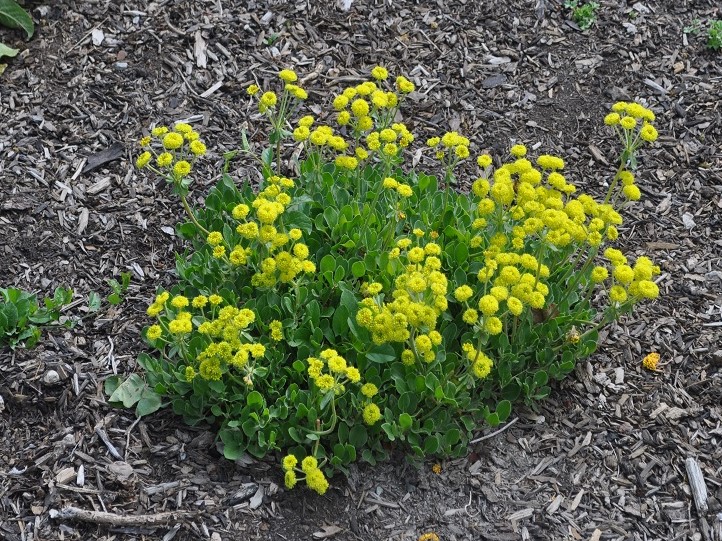
Kannah Creek Buckwheat Eriogonum umbellatum var. aureum 'Psdowns'
This Plant Select winning native perennial spreads into a mat of slightly silver-edged, gray-green leaves. Flowering begins in late spring or early summer and lasts through fall, with showy bunches of cream to sulfur yellow flowers that age to rusty orange. Foliage turns a rich burgundy in the fall and remains attractive through the winter. Prefers moderate to dry well-drained soil, do not overwater.
-

Karl Foerster Feather Reed Grass Calamagrostis x acutiflora 'Karl Foerster'
A slow-spreading, clump-forming, perennial grass with arching, mid-green leaves. Stiff, erect stems bear soft, pink-bronze inflorescences in summer, fading to buff or pale brown in late summer through winter. This naturally occuring hybrid is one of the most popular ornamental grass. Dried inflorescences retain beauty when cut and dried. Prefers full sun.
-
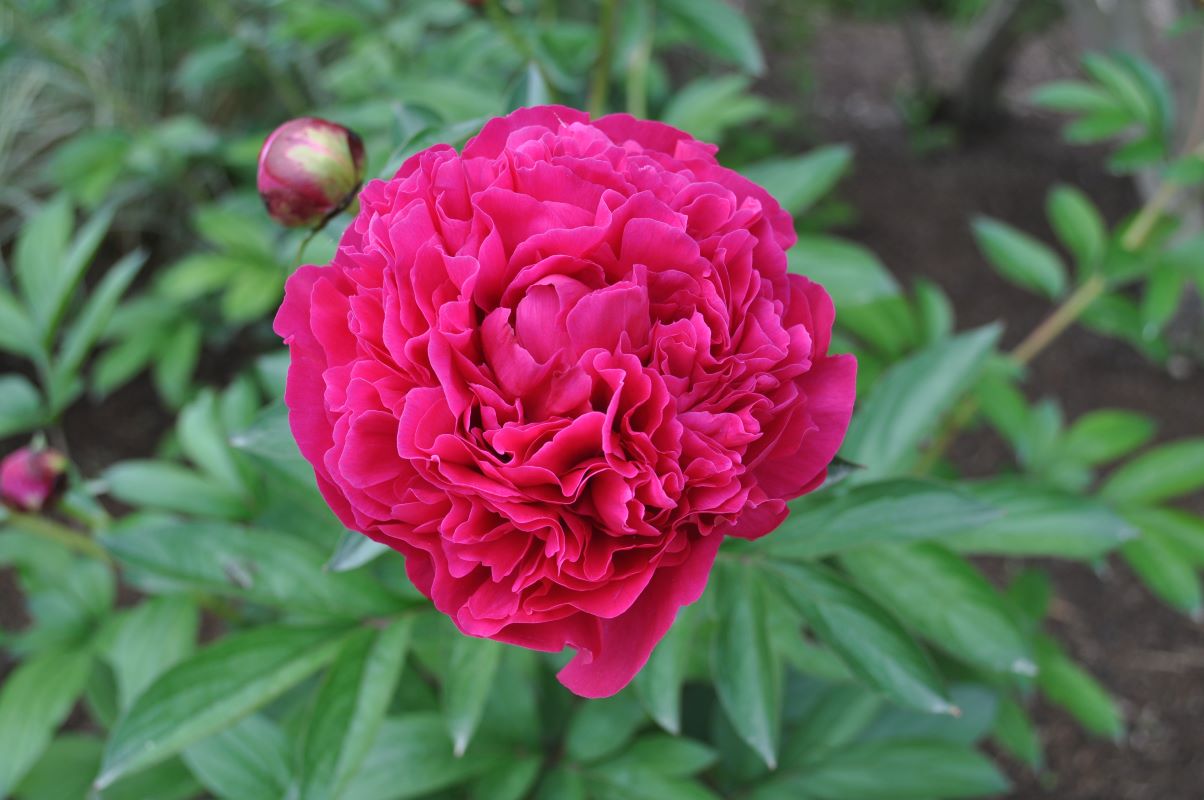
Karl Rosenfield Peony Paeonia lactiflora 'Karl Rosenfield'
A clump-forming, herbaceous, shrubby flowering perennial. Large mildly fragrant bright double crimson flowers bloom during late-spring. Attractive deeply lobed mid-green foliage provides appeal even when not in bloom. Plant in fertile well-drained soils. Tolerates some drought once established.
-

Karley Rose Oriental Fountain Grass Pennisetum orientale 'Karley Rose'
Dense, clump-forming, perennial grass with foxtail-like inflorescenses and narrow, mid-green leaves. Rose-purple wisps begin blooming in June. Very attractive foxtails last into fall. Prefers full sun. Moderately drought tolerant.
-

Karmina Cranesbill Geranium x cantabrigiense 'Karmina'
Low-growing herbaceous perennial that spreads by rhizomes. Under preferrable conditions it can form a dense mat. Produces masses of dark pink flowers in spring. Light green foliage is rounded and slightly lobed.
-

Kashmir Sage Phlomis cashmeriana
This large perennial is native to the Himalayas and Kashmir. Large, textured, gray-green foliage and whorls of lavender-pink flowers make this an excellent choice for dry shade gardens.
-
Katherine Phlox Phlox paniculata 'Katherine'
Upright growing perennial. Produces abundant lilac-pink flowers in tight clusters. Green, lance-shaped leaves grow on stiff upright stems. Provide good air circulation to prevent powdery mildew. Not very drought tolerant, may need extra watering at certain times.
-
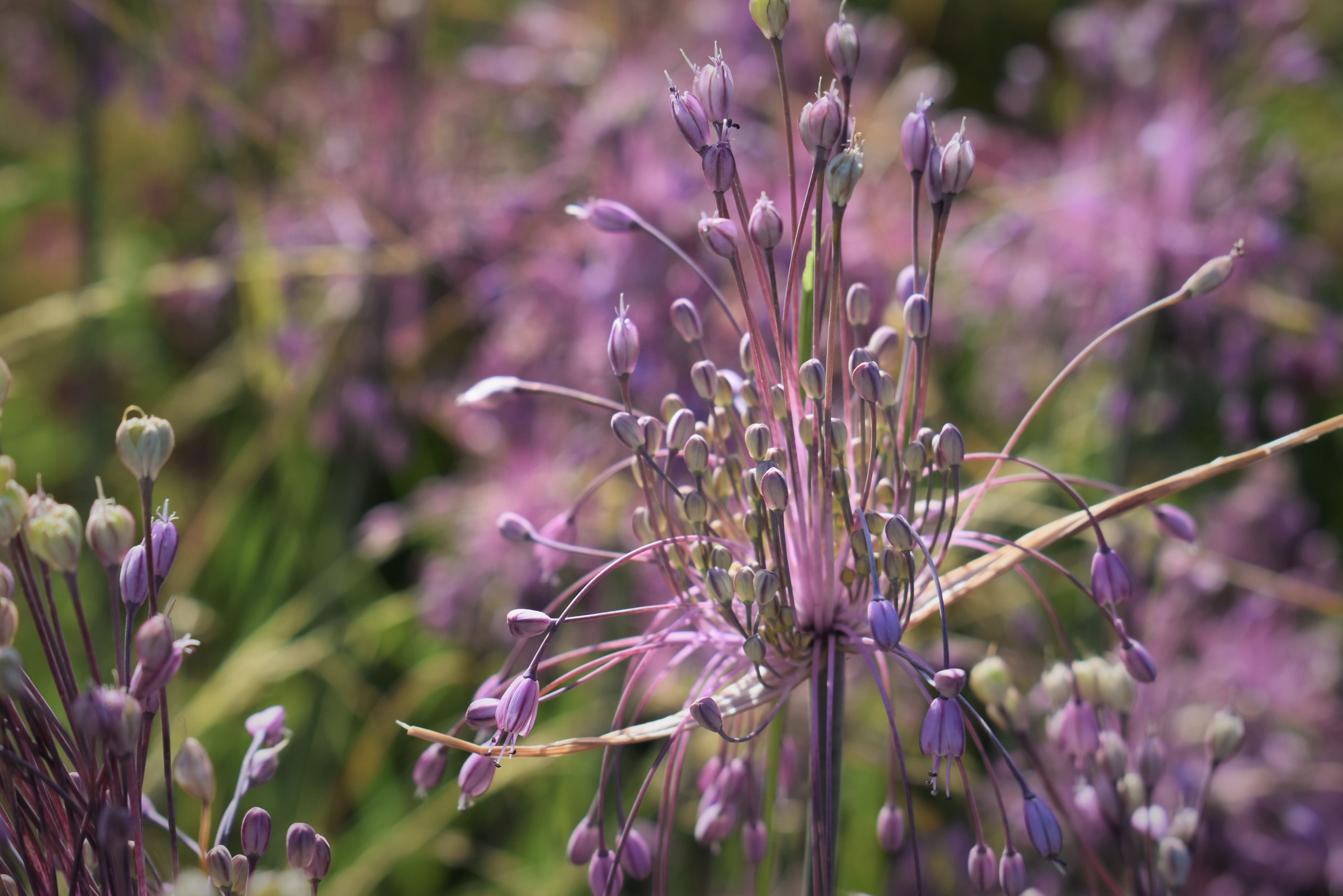
Keeled Garlic Allium carinatum subsp. pulchellum
Low-growing perennial related to the garden onion. Produces beautiful dark-pink to rosy-red flowers in summer. Enters dormancy once flowering is finished.
-

Keiko Itoh Peony Paeonia 'Pink Double Dandy'
A clump-forming, shrubby herbaceous perennial with abundant mid-green, deeply-lobed foliage growing on stiff upright stems. Large, fragrant, double pink flowers are loose. Petals flare and have irregular edges with contrasting yellow stamens in the centers. Plant in fertile well-drained soils. Tolerates some drought once established.
-

Kelsey's Dwarf Red Twig Dogwood Cornus sericea 'Kelseyi'
Small, mounding cultivar of red twig dogwood. Striking dark red branches especially visible in the winter. Oval to lance shaped green leaves turn red to orange in fall. June brings white flowers turning to white berries in the fall. Berries may be mildly toxic to humans (may cause stomach ache) but are a favorite of animals. Tolerates a wide range of soils but prefers moist. The species, Cornus sericea, is synonymous with C. stolonifera and is native to Utah.
-

Kent Beauty Oregano Origanum 'Kent Beauty'
Trailing semi-evergreen perennial. Not reliably winter hardy. Grown primarily for ornamental and not culinary purposes. Bright green leaves are aromatic but not to the same degree as culinary oregano. Cascades of blushing pink hop-like flowers bloom beginning in June continuing into the early-fall. Drought and heat tolerant.
-

Kentucky Bluegrass Poa pratensis
Cool-season turf-grass with attractive blue-green foliage. Most popular turfgrass in Utah. Grows best when temperatures are cool but will struggle during the summer. Requires a significant amount of water to remain green during the summer but will be healthier if watering is applied at the proper amounts. Proper irrigation typically involves decreasing irrigation frequency while increasing system run-time.
-
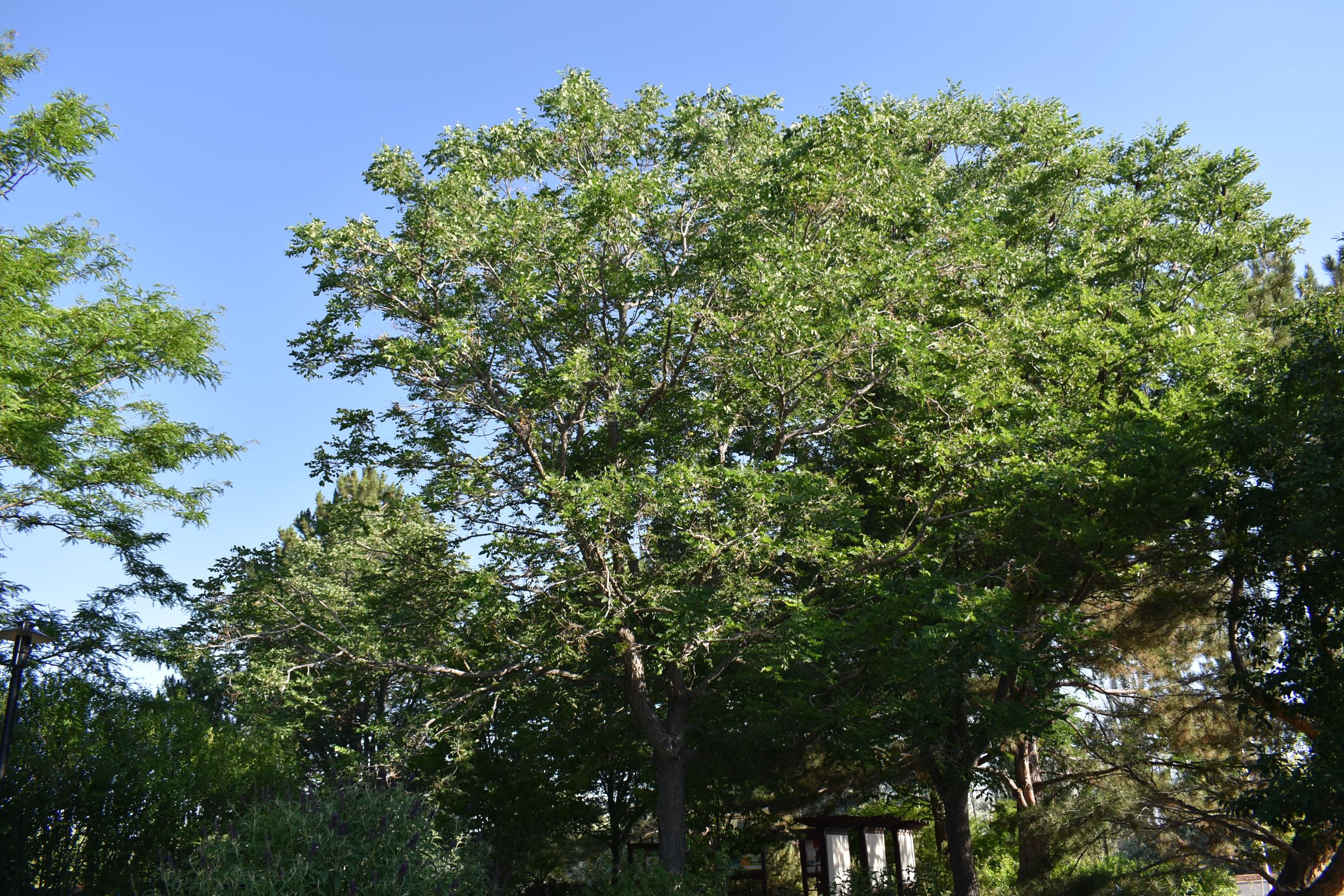
Kentucky Coffeetree Gymnocladus dioica
Very tall deciduous tree with an oval crown shape. Native to east and central North America. Large leaves are made up of small green leaflets. Large panicles of inconspicuous whitish green star-shaped flowers appear in late-spring. Large brown seed pods follow which will require some clean-up. Very nice winter look. Very tolerant of alkaline and infertile soils. Drought tolerant once established. Can become a very large tree so allow room to grow.
-

Kindred Spirit Oak Quercus robur x bicolor 'Nadler'
This hybrid of Swamp White Oak and Columnar English Oak has a narrow, columnar shape that makes it great for small spaces or screening. This versatile tree is relatively fast growing, resistant to powdery mildew and produces plenty of acorns, which constitute an important food source for many animals.
-
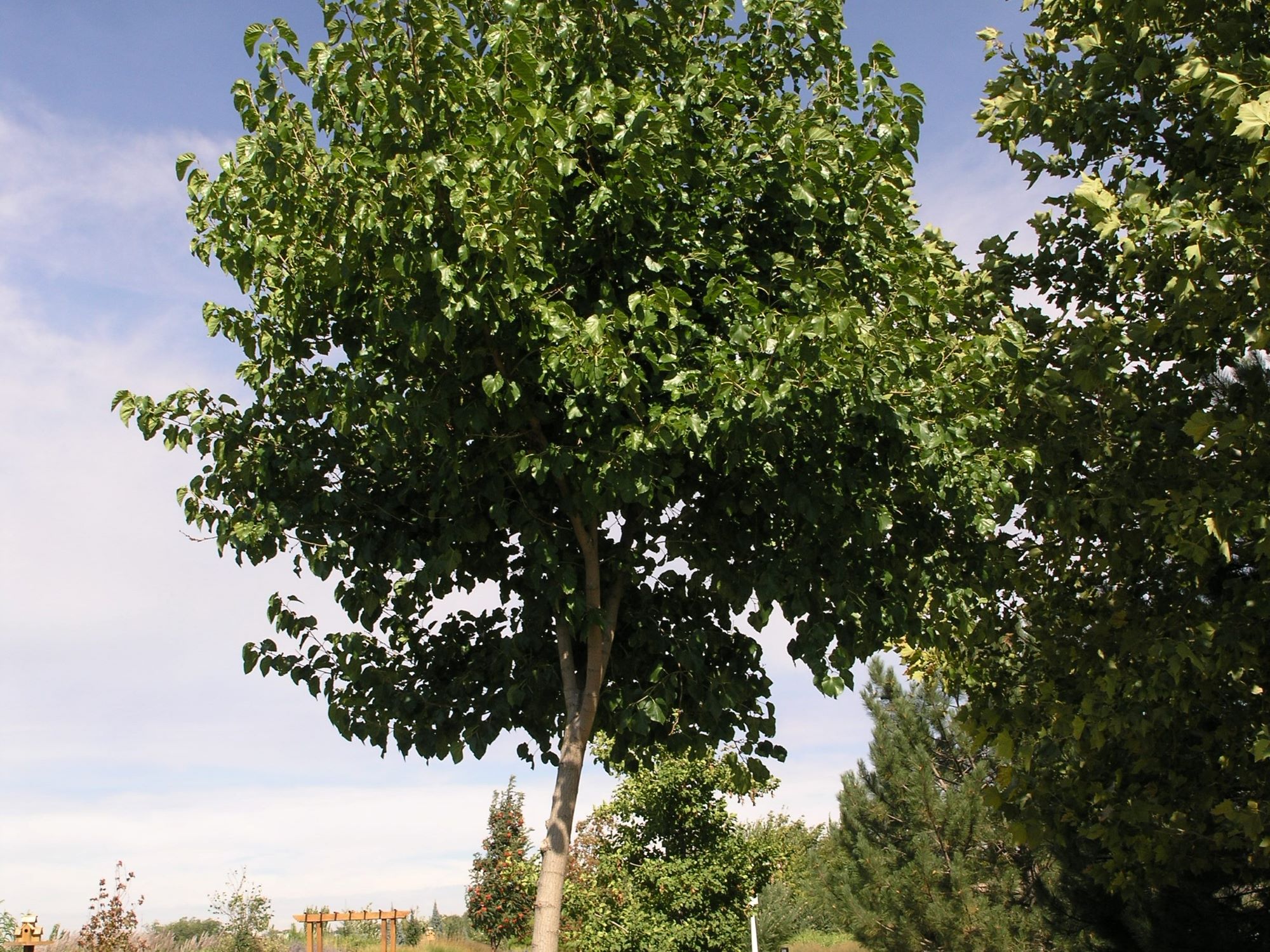
Kingan Mulberry Morus alba 'Kingan'
Vigorous spreading tree. Deeply veined leaves are large and glossy. Foliage turns yellow in the fall. Insignificant flowers appear in the spring. This cultivar is more salt and drought tolerant than the species. Adaptable to a wide range of soils and types.
-
Kinnikinnick Arctostaphylos uva-ursi
Low-growing mat-forming evergreen shrub. Shiny leathery dark green leaves may become reddish-brown during the winter. White flowers tinged with pink appear in spring. Red berries are eaten by birds but not recommended for human consumption. Extremely winter hardy. Tolerates poor soil.
-
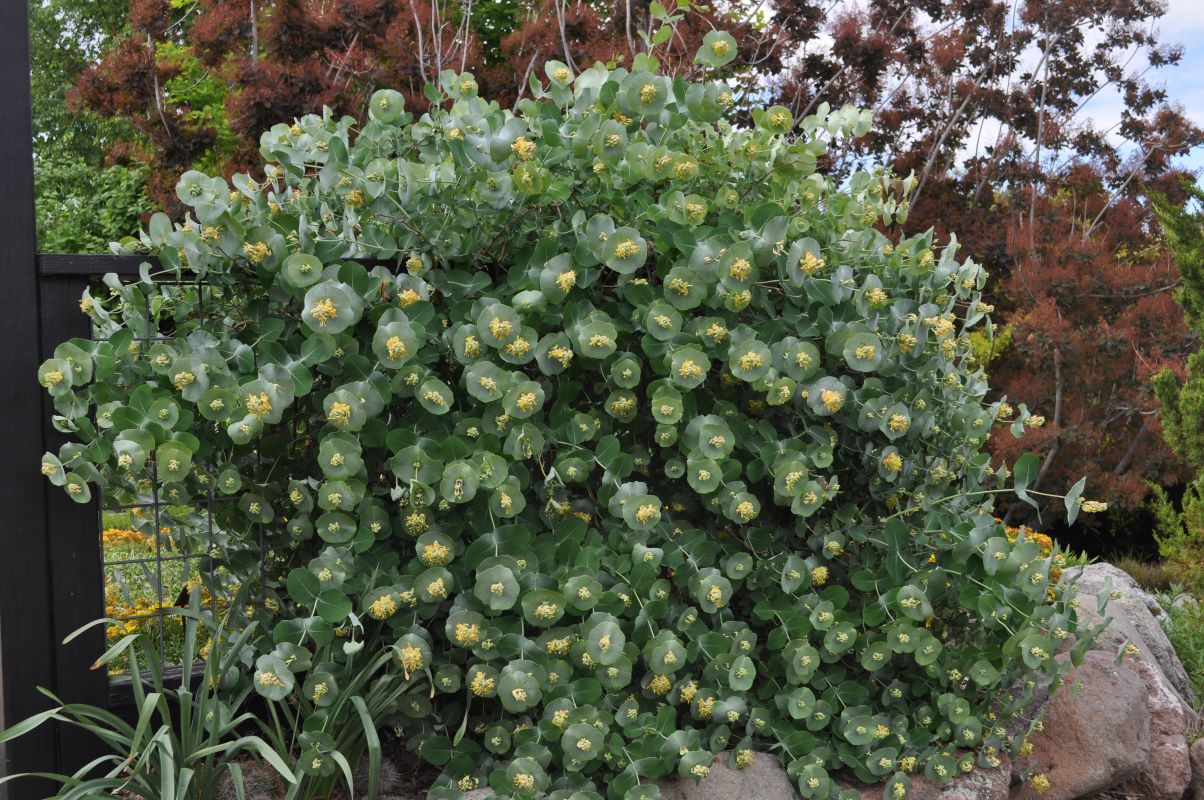
Kintzley's Ghost Honeysuckle Lonicera reticulata 'Kintzley's Ghost'
Propagated by William "Ped" Kintzley, this heirloom climbing vine features silver bracts around yellow tubular flowers that begin in late spring and bloom throughout the summer. It climbs well along fences and trellises.
-

Kiwi Sunset Zelkova Zelkova serrata 'Kiwi Sunset'
A small to medium deciduous umbrella-shaped, semi-weeping tree with lush golden serrated leaves that emerge pink, shade to lime green in summer, then red and bronze in fall.
-
Knautia Knautia macedonica
Loose clump-forming perennial with numerous long lasting crimson-red, pincushion-like flowerheads that bloom on slender, branched stems from early summer to frost (with deadheading). Prefers full sun in well-drained soil.
-
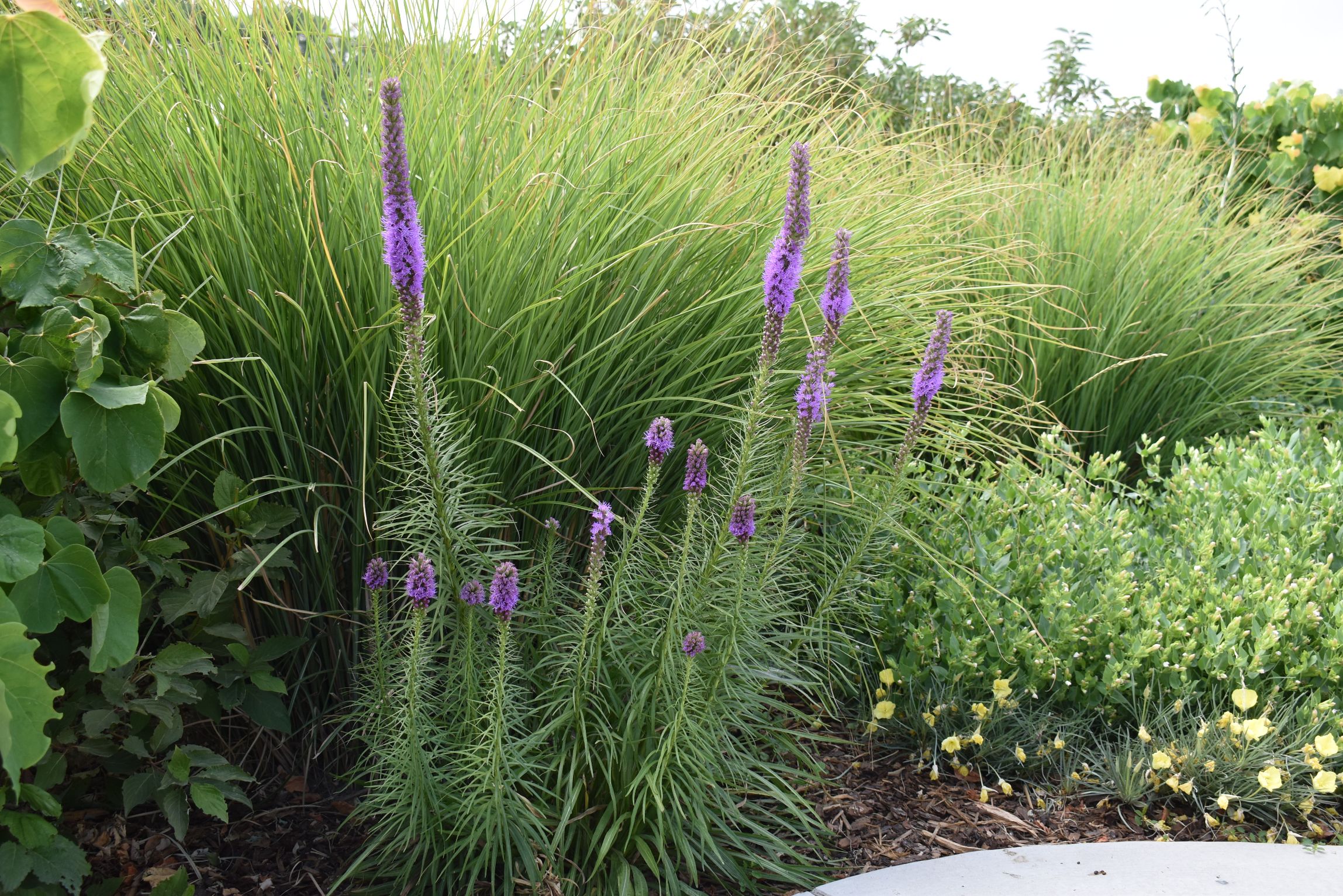
Kobold Blazing Star Liatris spicata 'Kobold'
Upright clump-forming perennial that is attractive to bees and butterflies. Spikes of deep purple flowers appear in the summer opening from the top downwards. Multiple stalks arise from basal tufts of narrow leaves. Will tolerate some drought and poor soils but prefers moderate amounts of water in fertile soils. Requires full sun. Makes excellent cut flowers.
-
Kodiak Black Diervilla Diervilla rivularis 'SMNDRSF'
This hardy shrub, sometimes called bush honeysuckle, features burgundy-black and dark green foliage which adds striking contrast to lighter colored perennials. The leaves take on darker shades in both spring and fall, and clusters of sunshine yellow flowers stand out in the early summer. Bush honeysuckles are native to the U.S. and are a great non-invasive choice for tough spots.
-
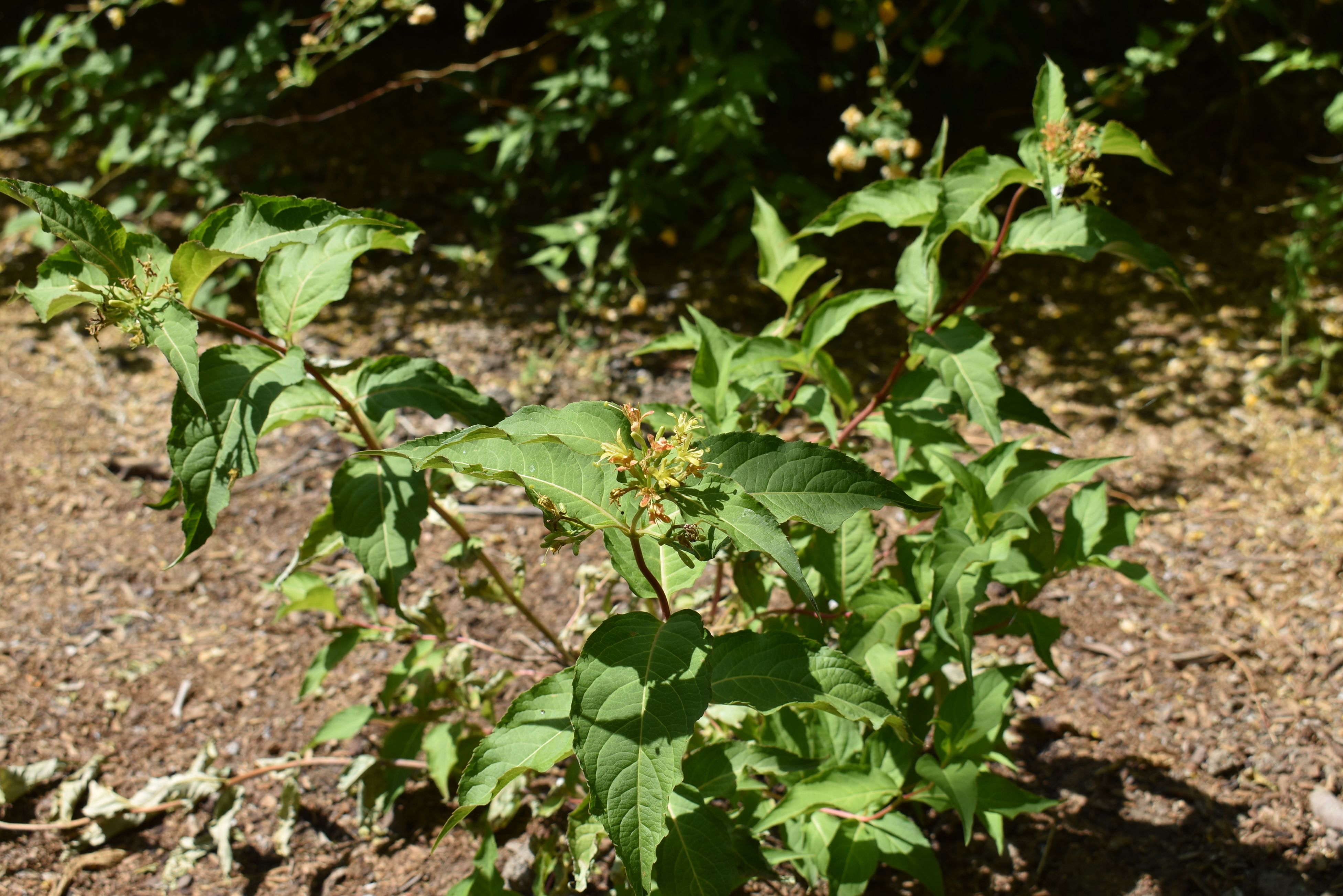
Kodiak Orange Diervilla Diervilla x splendens 'G2X88544'
A stunning colorful hybrid cultivar of a resilient North American native shrub. Diervillas, also known as Bush Honeysuckles, are not invasive like some of their honeysuckle relatives. New spring growth is red and matures to soft green in the summer. The delicate yellow blossoms benefit a variety of pollinators. Dramatic fall foliage in glowing shades of orange makes it a great alternative to Burning Bush. An adaptable and unfussy choice for borders and mass plantings.
-
Kodiak Red Diervilla Diervilla splendens 'G2X885411'
A stunning colorful cultivar of a resilient North American native shrub. New spring growth is dark burgundy and matures to green with red margins in the summer. The delicate yellow blossoms bloom all season, attracting beneficial pollinators. Bright red fall foliage makes it a great alternative to Burning Bush. Diervillas, also known as Bush Honeysuckles, are not invasive like some of their honeysuckle relatives. An adaptable and unfussy choice for borders and mass plantings
-
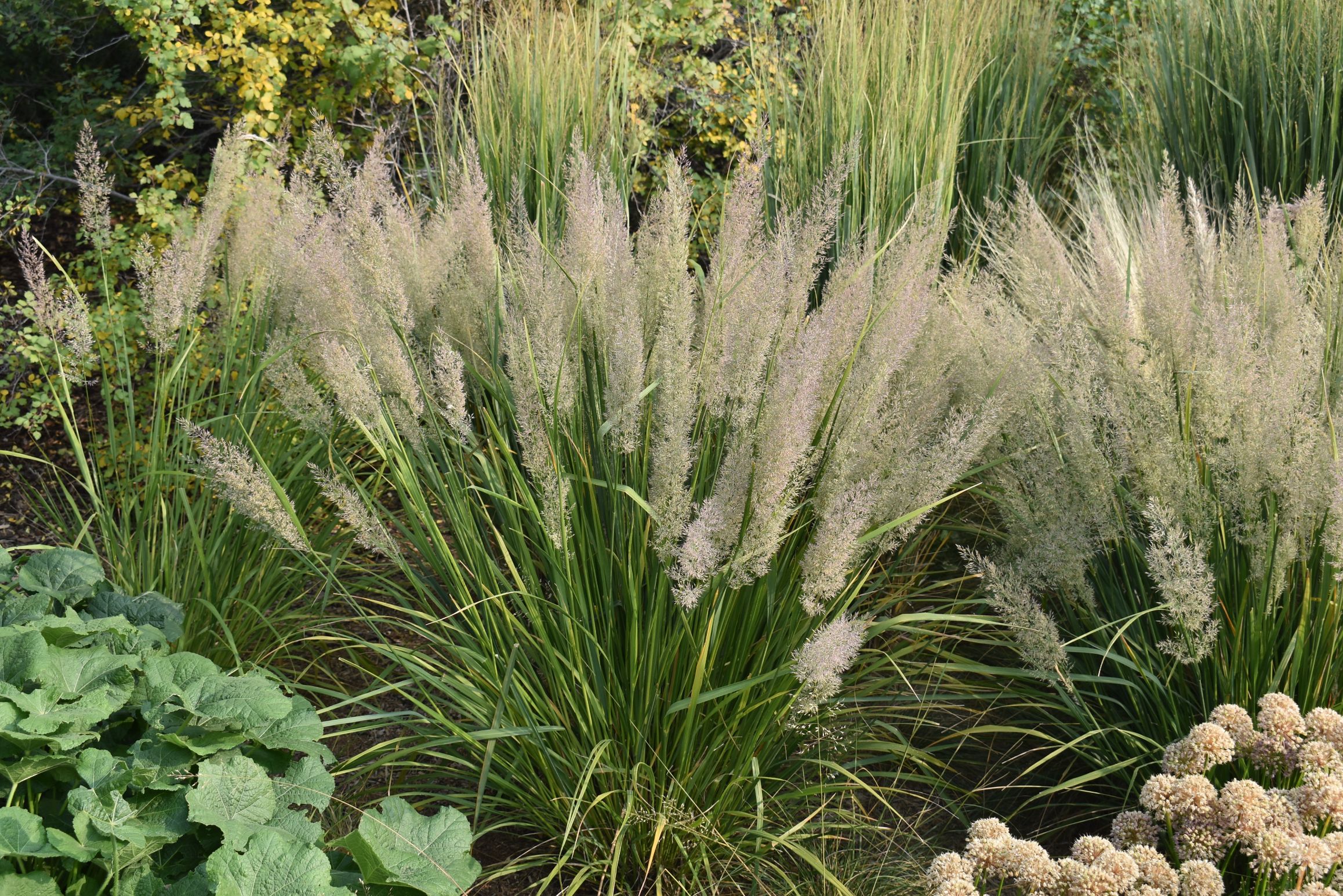
Korean Feather Reed Grass Calamagrostis brachytricha
Highly variable clump-forming grass species whose purple-red tinted, airy inflorescences appear in late-summer, turning silvery-gray in fall. Narrow 1/2" wide leaves are glossy green. Adapts to a wide range of soils if sufficient moisture is available.
-

Koreanspice Viburnum Viburnum carlesii
A slow-growing, low-maintenance shrub, this viburnum is a good choice for waterwise landscapes. Red to pink buds open to pink flowers changing to pure white snowballs with maturity. Dark green leaves turn dull red in the fall.
-
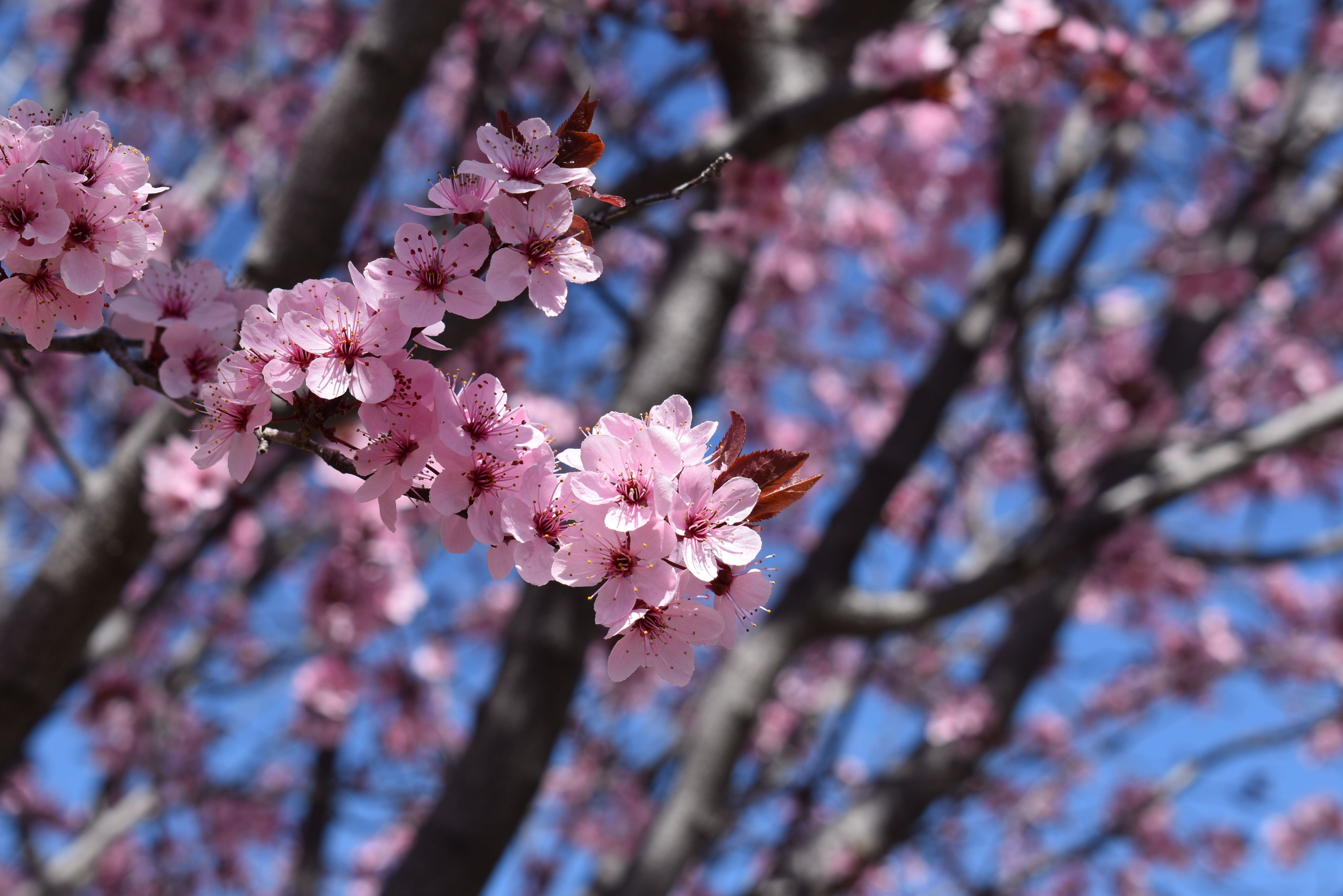
Krauter Vesuvius Cherry Plum Prunus cerasifera 'Krauter Vesuvius'
Small, flowering, deciduous tree with a rounded form. Profuse light pink flowers bloom in early-spring, one of the first to bloom. Dark purple leaves provide an excellent contrast in the landscape. Requires some early pruning to develop a good shape. May produce a few small fruits, that although edible, are better left on the tree.
-
Kaizuka Juniper
Large evergreen shrub with picturesque and open form. Tightly growing scale-like green leaves grow on upward-twisting branches that may lean to one side in maturity. Requires little to no pruning and does not create a uniform hedge due to varying forms. Tolerates alkaline soils and drought.
Juniperus chinensis 'Kaizuka'
Mature Size: 15-30' tall x 5-15' wide
-

Kannah Creek Buckwheat
This Plant Select winning native perennial spreads into a mat of slightly silver-edged, gray-green leaves. Flowering begins in late spring or early summer and lasts through fall, with showy bunches of cream to sulfur yellow flowers that age to rusty orange. Foliage turns a rich burgundy in the fall and remains attractive through the winter. Prefers moderate to dry well-drained soil, do not overwater.
Eriogonum umbellatum var. aureum 'Psdowns'
Mature Size: 12-24" tall and wide
-

Karl Foerster Feather Reed Grass
A slow-spreading, clump-forming, perennial grass with arching, mid-green leaves. Stiff, erect stems bear soft, pink-bronze inflorescences in summer, fading to buff or pale brown in late summer through winter. This naturally occuring hybrid is one of the most popular ornamental grass. Dried inflorescences retain beauty when cut and dried. Prefers full sun.
Calamagrostis x acutiflora 'Karl Foerster'
Mature Size: 3-5' tall x 2-2.5' wide
-

Karl Rosenfield Peony
A clump-forming, herbaceous, shrubby flowering perennial. Large mildly fragrant bright double crimson flowers bloom during late-spring. Attractive deeply lobed mid-green foliage provides appeal even when not in bloom. Plant in fertile well-drained soils. Tolerates some drought once established.
Paeonia lactiflora 'Karl Rosenfield'
Mature Size: 30-36" tall and wide
-

Karley Rose Oriental Fountain Grass
Dense, clump-forming, perennial grass with foxtail-like inflorescenses and narrow, mid-green leaves. Rose-purple wisps begin blooming in June. Very attractive foxtails last into fall. Prefers full sun. Moderately drought tolerant.
Pennisetum orientale 'Karley Rose'
Mature Size: 2-3' tall and wide
-

Karmina Cranesbill
Low-growing herbaceous perennial that spreads by rhizomes. Under preferrable conditions it can form a dense mat. Produces masses of dark pink flowers in spring. Light green foliage is rounded and slightly lobed.
Geranium x cantabrigiense 'Karmina'
Mature Size: 6-10" tall and wide
-

Kashmir Sage
This large perennial is native to the Himalayas and Kashmir. Large, textured, gray-green foliage and whorls of lavender-pink flowers make this an excellent choice for dry shade gardens.
Phlomis cashmeriana
Mature Size: 30-60" tall x 18-30" wide
-
Katherine Phlox
Upright growing perennial. Produces abundant lilac-pink flowers in tight clusters. Green, lance-shaped leaves grow on stiff upright stems. Provide good air circulation to prevent powdery mildew. Not very drought tolerant, may need extra watering at certain times.
Phlox paniculata 'Katherine'
Mature Size: 24-30" tall x 18-24" wide
-

Keeled Garlic
Low-growing perennial related to the garden onion. Produces beautiful dark-pink to rosy-red flowers in summer. Enters dormancy once flowering is finished.
Allium carinatum subsp. pulchellum
Mature Size: 12-18" tall x 3-6" wide
-

Keiko Itoh Peony
A clump-forming, shrubby herbaceous perennial with abundant mid-green, deeply-lobed foliage growing on stiff upright stems. Large, fragrant, double pink flowers are loose. Petals flare and have irregular edges with contrasting yellow stamens in the centers. Plant in fertile well-drained soils. Tolerates some drought once established.
Paeonia 'Pink Double Dandy'
Mature Size: 2-2.5' tall and wide
-

Kelsey's Dwarf Red Twig Dogwood
Small, mounding cultivar of red twig dogwood. Striking dark red branches especially visible in the winter. Oval to lance shaped green leaves turn red to orange in fall. June brings white flowers turning to white berries in the fall. Berries may be mildly toxic to humans (may cause stomach ache) but are a favorite of animals. Tolerates a wide range of soils but prefers moist. The species, Cornus sericea, is synonymous with C. stolonifera and is native to Utah.
Cornus sericea 'Kelseyi'
Mature Size: 2-3' tall and wide
-

Kent Beauty Oregano
Trailing semi-evergreen perennial. Not reliably winter hardy. Grown primarily for ornamental and not culinary purposes. Bright green leaves are aromatic but not to the same degree as culinary oregano. Cascades of blushing pink hop-like flowers bloom beginning in June continuing into the early-fall. Drought and heat tolerant.
Origanum 'Kent Beauty'
Mature Size: 6-8" tall x 10-12" wide
-

Kentucky Bluegrass
Cool-season turf-grass with attractive blue-green foliage. Most popular turfgrass in Utah. Grows best when temperatures are cool but will struggle during the summer. Requires a significant amount of water to remain green during the summer but will be healthier if watering is applied at the proper amounts. Proper irrigation typically involves decreasing irrigation frequency while increasing system run-time.
Poa pratensis
Mature Size: 3-6" tall
-

Kentucky Coffeetree
Very tall deciduous tree with an oval crown shape. Native to east and central North America. Large leaves are made up of small green leaflets. Large panicles of inconspicuous whitish green star-shaped flowers appear in late-spring. Large brown seed pods follow which will require some clean-up. Very nice winter look. Very tolerant of alkaline and infertile soils. Drought tolerant once established. Can become a very large tree so allow room to grow.
Gymnocladus dioica
Mature Size: 60-70' tall x 40-50' wide
-

Kindred Spirit Oak
This hybrid of Swamp White Oak and Columnar English Oak has a narrow, columnar shape that makes it great for small spaces or screening. This versatile tree is relatively fast growing, resistant to powdery mildew and produces plenty of acorns, which constitute an important food source for many animals.
Quercus robur x bicolor 'Nadler'
Mature Size: 30' tall x 6' wide
-

Kingan Mulberry
Vigorous spreading tree. Deeply veined leaves are large and glossy. Foliage turns yellow in the fall. Insignificant flowers appear in the spring. This cultivar is more salt and drought tolerant than the species. Adaptable to a wide range of soils and types.
Morus alba 'Kingan'
Mature Size: 30-50' tall x 30' wide
-
Kinnikinnick
Low-growing mat-forming evergreen shrub. Shiny leathery dark green leaves may become reddish-brown during the winter. White flowers tinged with pink appear in spring. Red berries are eaten by birds but not recommended for human consumption. Extremely winter hardy. Tolerates poor soil.
Arctostaphylos uva-ursi
Mature Size: 0.3' tall x 3-6' wide
-

Kintzley's Ghost Honeysuckle
Propagated by William "Ped" Kintzley, this heirloom climbing vine features silver bracts around yellow tubular flowers that begin in late spring and bloom throughout the summer. It climbs well along fences and trellises.
Lonicera reticulata 'Kintzley's Ghost'
Mature Size: 8-12' tall x 3-6' wide
-

Kiwi Sunset Zelkova
A small to medium deciduous umbrella-shaped, semi-weeping tree with lush golden serrated leaves that emerge pink, shade to lime green in summer, then red and bronze in fall.
Zelkova serrata 'Kiwi Sunset'
Mature Size: 15-30' tall x 12-18' wide
-
Knautia
Loose clump-forming perennial with numerous long lasting crimson-red, pincushion-like flowerheads that bloom on slender, branched stems from early summer to frost (with deadheading). Prefers full sun in well-drained soil.
Knautia macedonica
Mature Size: 24-32" tall x 18" wide
-

Kobold Blazing Star
Upright clump-forming perennial that is attractive to bees and butterflies. Spikes of deep purple flowers appear in the summer opening from the top downwards. Multiple stalks arise from basal tufts of narrow leaves. Will tolerate some drought and poor soils but prefers moderate amounts of water in fertile soils. Requires full sun. Makes excellent cut flowers.
Liatris spicata 'Kobold'
Mature Size: 16-20" tall x 8-18" wide
-
Kodiak Black Diervilla
This hardy shrub, sometimes called bush honeysuckle, features burgundy-black and dark green foliage which adds striking contrast to lighter colored perennials. The leaves take on darker shades in both spring and fall, and clusters of sunshine yellow flowers stand out in the early summer. Bush honeysuckles are native to the U.S. and are a great non-invasive choice for tough spots.
Diervilla rivularis 'SMNDRSF'
Mature Size: 3-4' tall and wide
-

Kodiak Orange Diervilla
A stunning colorful hybrid cultivar of a resilient North American native shrub. Diervillas, also known as Bush Honeysuckles, are not invasive like some of their honeysuckle relatives. New spring growth is red and matures to soft green in the summer. The delicate yellow blossoms benefit a variety of pollinators. Dramatic fall foliage in glowing shades of orange makes it a great alternative to Burning Bush. An adaptable and unfussy choice for borders and mass plantings.
Diervilla x splendens 'G2X88544'
Mature Size: 3-4' tall and wide
-
Kodiak Red Diervilla
A stunning colorful cultivar of a resilient North American native shrub. New spring growth is dark burgundy and matures to green with red margins in the summer. The delicate yellow blossoms bloom all season, attracting beneficial pollinators. Bright red fall foliage makes it a great alternative to Burning Bush. Diervillas, also known as Bush Honeysuckles, are not invasive like some of their honeysuckle relatives. An adaptable and unfussy choice for borders and mass plantings
Diervilla splendens 'G2X885411'
Mature Size: 3-4' tall x 4-5' wide
-

Korean Feather Reed Grass
Highly variable clump-forming grass species whose purple-red tinted, airy inflorescences appear in late-summer, turning silvery-gray in fall. Narrow 1/2" wide leaves are glossy green. Adapts to a wide range of soils if sufficient moisture is available.
Calamagrostis brachytricha
Mature Size: 3-4' tall x 2-3' wide
-

Koreanspice Viburnum
A slow-growing, low-maintenance shrub, this viburnum is a good choice for waterwise landscapes. Red to pink buds open to pink flowers changing to pure white snowballs with maturity. Dark green leaves turn dull red in the fall.
Viburnum carlesii
Mature Size: 4-6' tall and wide
-

Krauter Vesuvius Cherry Plum
Small, flowering, deciduous tree with a rounded form. Profuse light pink flowers bloom in early-spring, one of the first to bloom. Dark purple leaves provide an excellent contrast in the landscape. Requires some early pruning to develop a good shape. May produce a few small fruits, that although edible, are better left on the tree.
Prunus cerasifera 'Krauter Vesuvius'
Mature Size: 15-20' tall x 10-15' wide